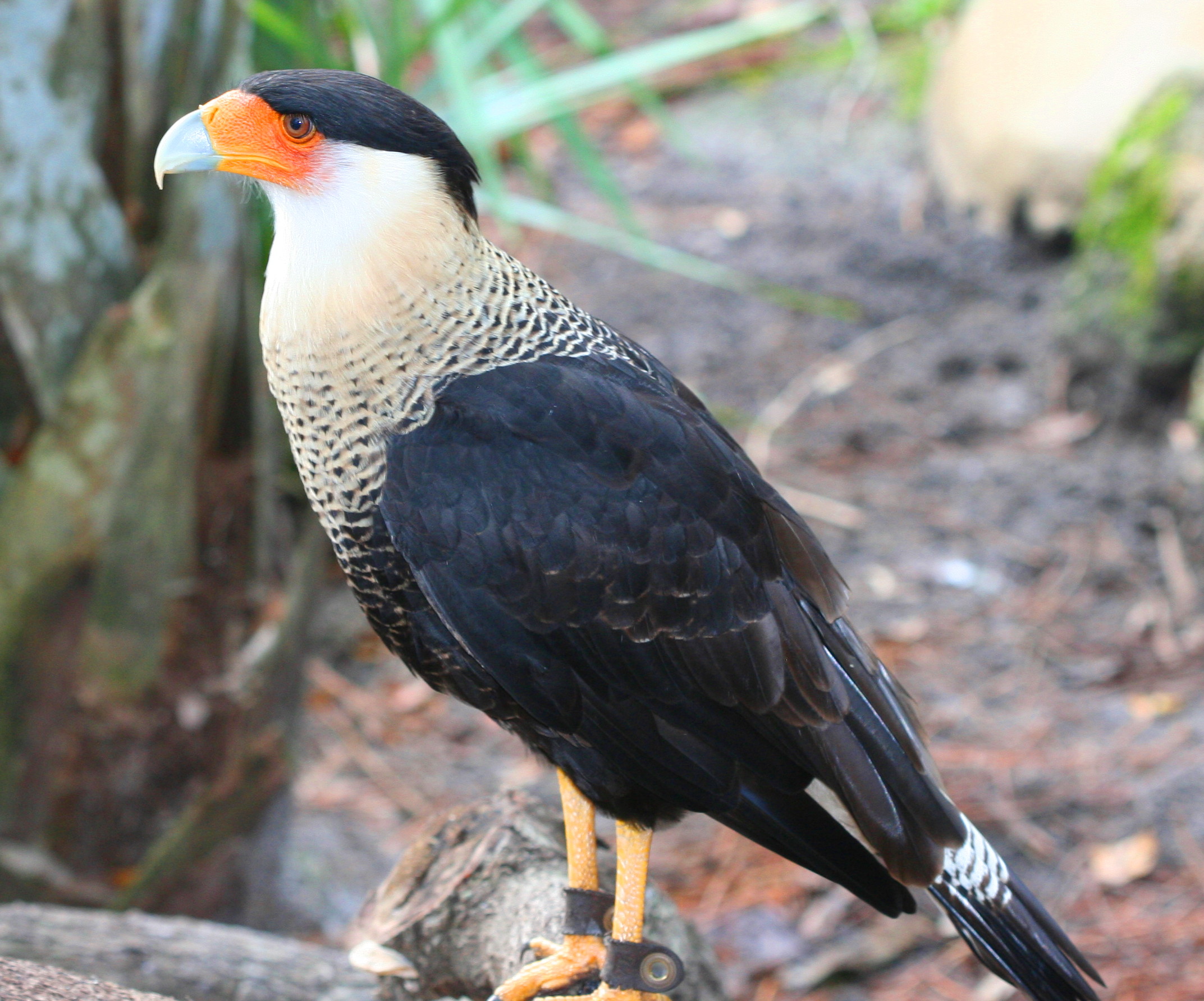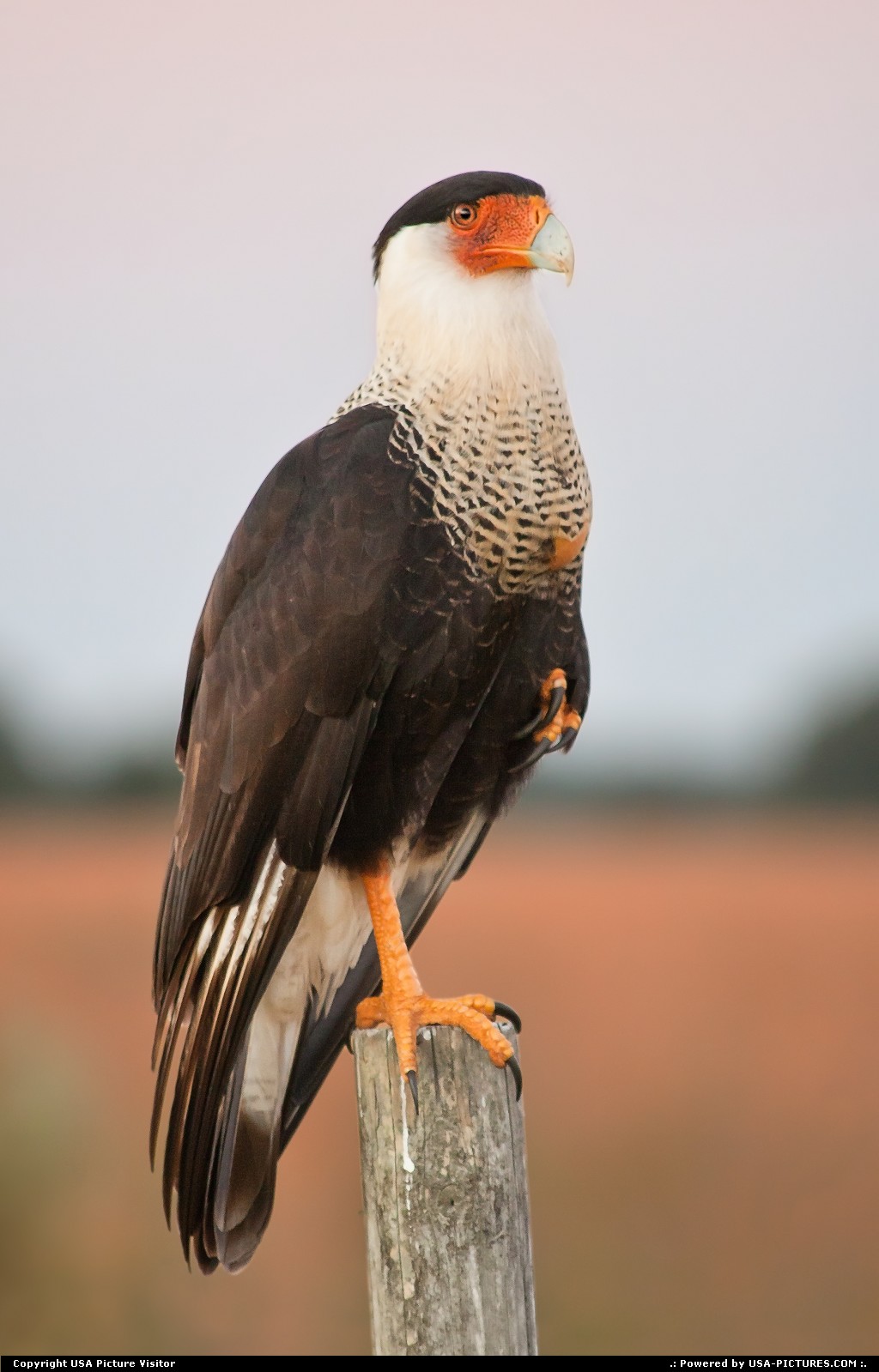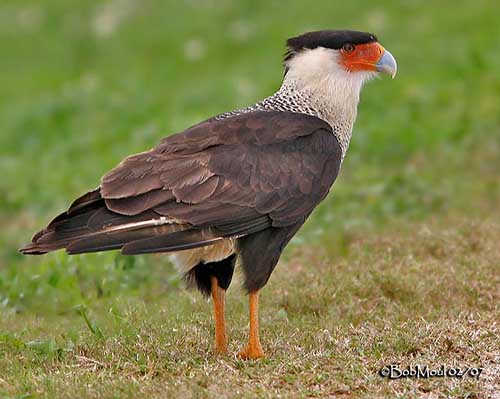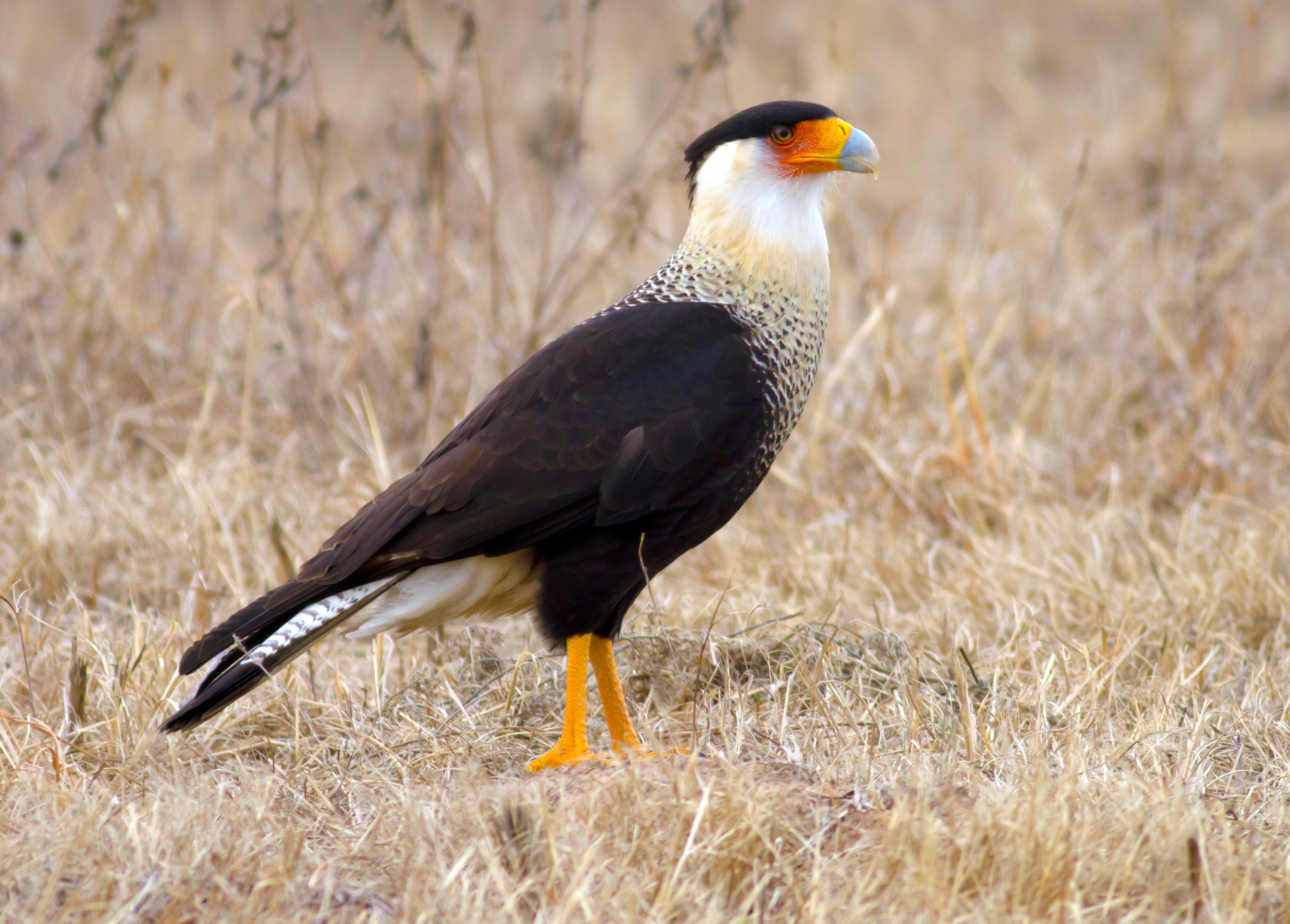Northern Crested Caracara
Caracara cheriway cheriway
The Karibikkarakara ( Caracara cheriway ) is a falcon -like bird from southern North America, Central America and northern South America. The species is divided into two subspecies, the North Caracara cheriway auduboni, in the south Caracara cheriway cheriway.
Features
The Karibikkarakara is 51 to 60 cm long, and reaches a wingspan of 107-132 cm. The tail length is 22 to 25 cm. Males stay smaller, they reach about 97 % of the size of the females (calculated from the mean values of the wingspan ). The head is large and flat, the beak size and narrow. the crest is black, naked face and red. Feet and legs are yellow, the gray of the young birds.
In C. c. auduboni is the top black brown, banded neck and chest cream with black and brown. C. c. cheriway is blacker above, cheek and throat are white, neck and chest are white and black banded. The dark bands are wider.
Young birds are browner, total stained less contrast, the chest is more than dashed banded.
Occurrence
The northern subspecies of Karibikkarakara (C. c. Auduboni ) lives in Cuba, with the exception of Petenes, Belize, and the eastern Panama in Central America and Mexico, with the exception of the eastern Yucatan, central northern Mexico and northern Baja California. In the U.S., he lives on the coast of Texas, and a small area in Central Florida. C. c. cheriway, the southern subspecies lives from eastern Panama on Venezuela to the three Guiana, as well as in the western Pacific Colombia and Ecuador, the Netherlands Antilles and Trinidad. The Karibikkarakara prefers open landscapes, such as savannas, cattle ranches and walks in the mountains at altitudes up to 2500 meters, maximum up to 3800 meters.
Behavior
The Karibikkarakara lives individually, in some areas, but in groups of up to 50 animals. He runs well and spends a lot of time on the ground. It feeds mainly on carrion, which it seeks also on roadsides. Sometimes it is found together with vultures on larger carcasses, where he pecked also maggots. He also captured young birds, eggs, sick animals and chasing other birds of prey from the prey. He is mostly silent, meets with disputes in the air a shrill " kiiier ", gives rattling sounds during courtship of and yells at the nest a single or double dry " chak ".










